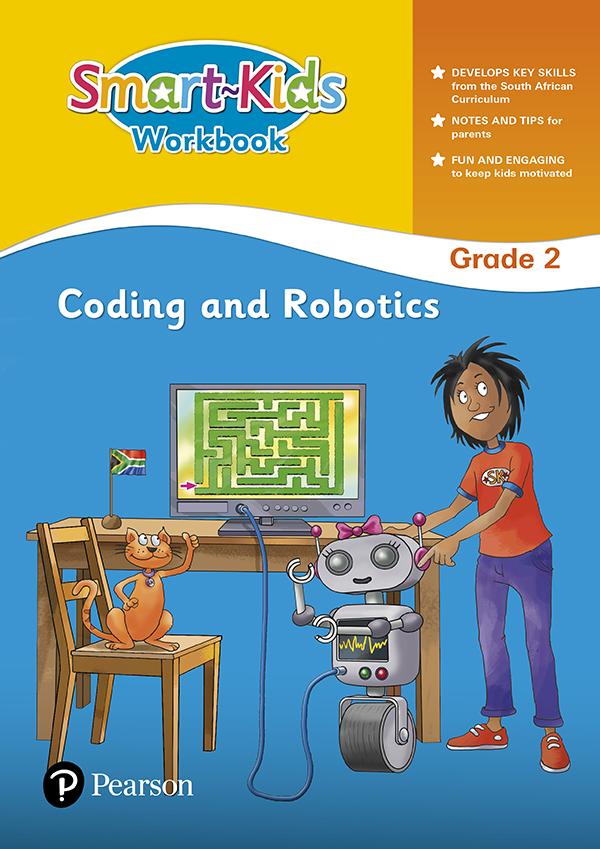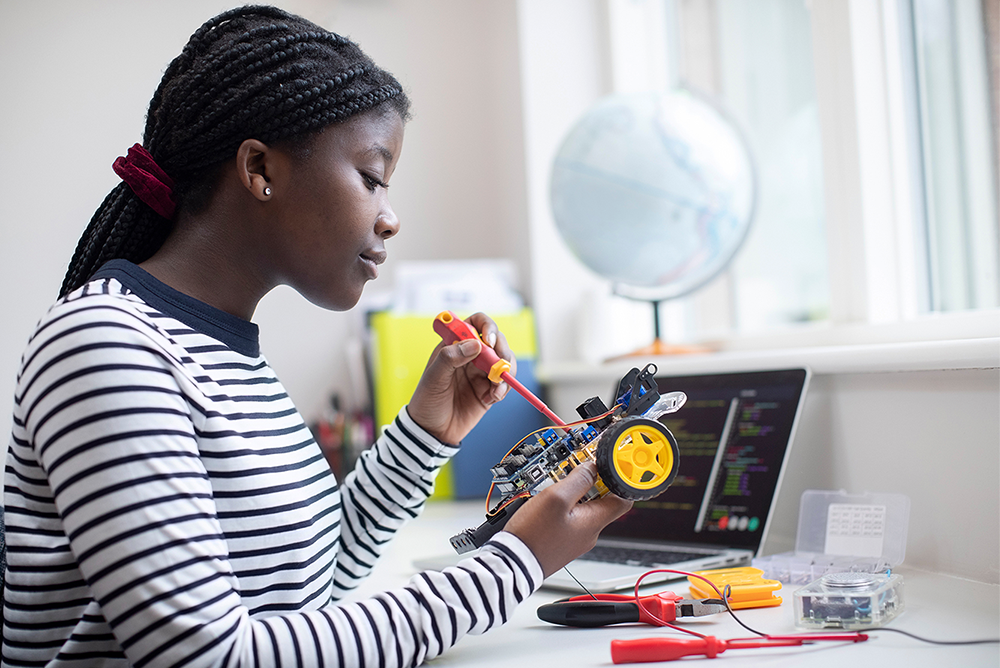Vuma: an educator's story of how to instill a love of reading and lay a strong literacy foundation
In 2018, Ms. Karen Eybers, a teacher at Bronville Primary School, began teaching Afrikaans Home Language using Vuma, a reading instruction programme developed by Pearson. Through the use of Vuma, she found that there was an increase in her learners’ engagement and motivation in reading. She also believed her learners showed a higher level of understanding when using Vuma. Further, the varied reading strategies made teaching the different aspects of Afrikaans Home Language much easier to implement.

Ms. Eybers’ main goal was to adopt a reading instruction programme that made her learners excited about reading. She wanted to instill that love of reading early on in hopes that it would carry through the rest of their academic experiences.
Challenges faced
- The Grade 1 learners were previously in a combined class with the Grade 2 learners when Ms. Eybers arrived in February, 2018.
- Some of the learners were younger than the traditional age for Grade 1 and there was no Grade R facility available at the school at that time.
- Many of the learners come from challenging socio-economic backgrounds with social issues and many of the learners are reliant on the school’s feeding scheme for their basic needs.
- Literacy levels are a challenge in the Eastern Cape so addressing reading was a key challenge.
“I wouldn’t be using this if I thought it wasn’t good and it wasn’t something that the kids enjoyed. At least I can achieve the goals that I have set out to achieve by using it. Definitely.” — Ms. Eybers
Implementation
Ms. Eybers wasn’t initially intending on changing her approach to teaching reading but when she was introduced to Vuma, she thought she would try it. She felt that the previous series she used was outdated and she wanted to do something to make the learners excited about reading.
Ms. Eybers believes that creating a solid literacy foundation is key to further academic success. Implementing Vuma, while adding in her own creative activities and resources, has helped to lay that foundation.
Vuma was easy to use
Ms. Eybers didn’t receive formal training in using Vuma and found the programme easy to use with the valuable guidance from the lesson plans and teacher’s guide.
Vuma supports the use of reading strategies
Vuma is used to implement the different reading strategies prescribed by CAPS with a particular focus on Shared Reading and Group Guided Reading.
“Because it’s one thing to flash the words, read sentences, read the book. It feels like you have got to do more. That is what makes it more exciting for the children too and for yourself… You have more satisfaction. You can just see this is working, this is nice, this works.” — Ms. Eybers
Vuma supports the development of language skills
Ms. Eybers used Vuma alongside the workbooks from the department of education for teaching the different aspects of Afrikaans Home Language in the following ways.
- Sentence building – there are opportunities for sentence building activities after learners have finished reading a book. Ms. Eybers gives them text copied out on strips of paper and learners would need to piece the story back together. This also helps to build their punctuation skills.
- Vocabulary development – extended vocabulary is developed through using pictures in the Vuma books. The teacher created her own flashcards indicating items in the picture and learners would stick them onto the pages in the Big Book.
- Shared writing – Ms. Eybers has developed songs about the various Vuma characters. In the lesson observed, learners reminded Ms. Eybers that they didn’t have a song about Nina, one of the Vuma characters. This allowed Ms. Eybers to move into a shared writing activity with the class. They composed a song together and sang it as a class. Ms. Eybers thought the Vuma characters and stories help to inspire this creativity in the class.
Vuma lays a solid foundation for reading
Ms. Eybers reflected on how important the early years are for laying a solid literacy foundation and believes that if they can implement Vuma across the foundation phase, it will help them to achieve this objective. She believes that the Grade 2 teacher next year will have an easier time when her Grade 1 learners arrive because they will be familiar with the series.
“They get excited about the story… You saw now like writing this verse of this song. They get involved.” — Ms. Eybers
Findings
Ms. Eybers’ main goal for adopting Vuma was to inspire a love for reading. When asked to rate her level of agreement with the statement that Vuma supports learner engagement, on a scale of 0 – 10, Ms. Eybers rated it a 10 which is ‘strongly agree’.
Vuma made teaching easier
As a comprehensive reading programme, Vuma has all the different resources needed to help make the teaching of reading easier. Ms. Eybers referred to the following features of Vuma as making her teaching easier:
- The pre-reading questions at the front of the book.
- The new words list in the books help you to focus on the vocabulary you need to teach.
- The learners’ interest in the stories sparks questions.
Learners related well to the characters
The learners have responded very well to the characters. Ms. Eybers thought that it was because of how true-to-life the characters are that makes learners connect with them.
“I think it is because they are so true-to-life... These children can easily associate with them… That to me was part of the fascinating part of this… the way they took to these characters.” — Ms. Eybers
Enhancing resources to build on the love for the characters
Ms. Eybers has created resources in her class which strengthen the love of the characters. She has created figures of the characters which are attached to sticks and these characters appear from behind red theatrical curtains on a hollowed out television.
Ms. Eybers also uses these figures for oral lessons with the learners, where they role play what has happened in the story, using the figures on sticks to facilitate this.
She finds this approach helps her learners build confidence in speaking in front of the class because they are speaking through the characters rather than about themselves, which creates a ‘safer’ distance.
Ms. Eybers has also written songs about the Vuma characters and learners sing these songs together.
Vuma enables cross-curricular integration
The Vuma characters live in familiar surroundings to South African learners: a shack, a small house, a farm and a block of flats. Talking about their surroundings and having pets as characters integrates themes from Life Skills Grade 1 into teaching.
“So, to me, it was just a nicer way, easier way, fun, exciting way and that was my goal. Because I thought to myself I must somehow make these children enjoy reading. Because I’ll tell you a lot of them go to the library to watch TV not to read.” — Ms. Eybers
Vuma helps to take learners from the known to the unknown, expanding their context
In the observed lesson, learners engaged with a story where a Vuma character is overseas in a cold place and thinking of, and missing, the familiar South African environment. Ms. Eybers said that in the previous lesson, she had shown the learners a video of a plane and snow to help them become familiar with the concepts, that this journey from the known to the unknown needs this kind of scaffolding for learners to meaningfully relate. She finds that supplementing Vuma with these varied resources adds interest and excitement.
Vuma seems to support visual literacy
Ms. Eybers pointed out how reading is about more than just the words. As a class, they discuss the pictures. In the lesson observed, one of the learners, without prompting from the teacher, pointed out footprints in the snow where someone had been walking. Ms. Eybers said that the learners tend to notice great detail in the pictures, for example, one of the characters had a hole in their shoe and the learners commented on this. The teacher said she hadn’t noticed this detail but the learners did.
“They said the toe is sticking out. The hole is there. Who would see that? They picked it up!... They really study these pictures.” — Ms. Eybers— Ms. Eybers
Vuma is supporting learners in their reading
It’s still in the early stages of implementation of Vuma at Bronville Primary School, but Ms. Eybers is noticing a positive influence of Vuma on learners’ reading ability. She thought that
after the June-July holidays, learners would have forgotten some of what they had learned in terms of reading. However, she noticed that this was not the case and that they were able to read many words and write their own sentences. In addition, Ms. Eybers believes learners responses to the pre- and post-reading questions reveal that many of them are reading with understanding.
Conclusion
Implementing Vuma has helped Ms. Eybers achieve her goal of finding a program that engaged and motivated her learners to read.
Having the series in her classroom is making Ms. Eybers’ life as a teacher easier in terms of
implementing the different reading strategies and teaching different aspects of Afrikaans Home Language.
In addition, as seen by the teacher’s report, the learners are showing understanding when answering the pre- and post-reading questions and learners appear to be reading with better understanding.
Ms. Eybers has continued using Vuma and the intention is to expand its use at the school beyond Grades R and 1 to include all grades in the Foundation Phase in 2019.















